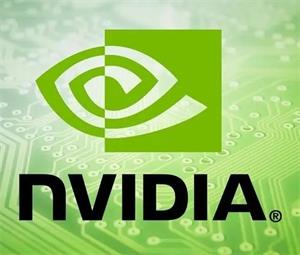Nvidia RTX 4070 vs Nvidia RTX 3080 Ti


The Nvidia RTX 4070 features the newer Ada Lovelace architecture, providing better ray tracing and DLSS performance, while the Nvidia RTX 3080 Ti excels in raw rasterization performance. The RTX 4070 has fewer CUDA cores and lower power consumption, making it a more power-efficient option. Overall, the RTX 4070 is stronger in ray tracing and DLSS, while the RTX 3080 Ti leads in raw rasterization performance.
Nvidia RTX 4070
Pros:
Better performance per watt: Up to 30% more efficient than the RTX 3080 Ti.
DLSS 3 support: Improved image quality and performance with AI upscaling.
Lower power consumption: 230W compared to 350W for the RTX 3080 Ti.
Cons:
Lower memory bandwidth: 288 GB/s compared to 384 GB/s for the RTX 3080 Ti.
Slightly lower overall performance: 5-10% slower than the RTX 3080 Ti at 4K.
Nvidia RTX 3080 Ti
Pros:
Higher overall performance: 5-10% faster than the RTX 4070 at 4K.
More memory bandwidth: 384 GB/s compared to 288 GB/s for the RTX 4070.
Lower price: Currently available for less than the RTX 4070.
Cons:
Worse performance per watt: Less efficient than the RTX 4070.
No DLSS 3 support: Does not support AI upscaling.
Higher power consumption: 350W compared to 230W for the RTX 4070.
Graphics core
| Release Date | August 30, 2023 | September 17, 2020 |
| Generation | Ada Lovelace | Ampere |
| Applicable Type | Desktop | Desktop |
| Processor Number | 1 | 1 |
| Bus Interface | PCIe 4.0 x16 | PCIe 4.0 x16 |
Memory
| Type | GDDR6X | GDDR6X |
| Capacity | 12GB | 12GB |
| Memory Bus Width | 192-bit | 384-bit |
| Memory Speed | 21 Gbps | 19 Gbps |
Clock speed
| Base Clock | 1.92 GHz | 1.35 GHz |
| Boost Clock | 2.48 GHz | 1.67 GHz |
Render Config
| CUDA Cores | 5888 | 10240 |
| Raster Operators | 168 | 96 |
| Texture Units | 184 | 320 |
Theoretical Performance
| FP32 | 36.1 TFLOPS | 35.5 TFLOPS |
| INT32 | 72.2 TFLOPS | 71 TFLOPS |
Graphics Processor
| Model | AD104 | GA102 |
| Transistor Count | 35.8 Billion | 28.3 Billion |
| Manufacturing Process | TSMC 4N | Samsung 8N |
Board Design
| Dimensions | 285mm x 112mm x 40mm | 285mm x 112mm x 40mm |
| Power Consumption | 230W | 350W |
| Power Connector | 1x 16-pin PCIe | 3x 8-pin PCIe |
| Cooling Solution | Dual-Fan | Triple-Fan |
Benchmark Comparison
The Nvidia RTX 4070 and RTX 3080 Ti are both powerful graphics cards aimed at high-end gamers and professionals. To help you choose the one that's right for you, we'll be comparing their performance, power consumption, and other key factors in depth.
Performance
4K resolution:
At 4K resolution, the RTX 4070 slightly underperforms the RTX 3080 Ti, with an average difference of about 5-10%.
In some game tests, such as Tomb Raider: Shadow of the Tomb Raider and Cyberpunk 2077, the RTX 4070's frame rate gap approached over 10%.
However, in other games such as Assassin's Creed: Inferno and Extreme Racing: Horizon 5, the gap narrowed to less than 5%.
1440p resolution:
At 1440p resolution, the RTX 4070's performance is much closer to that of the RTX 3080 Ti, with a gap difference of between 0-5%.
For the most part, the RTX 4070's frame rate is comparable to the RTX 3080 Ti, and even slightly ahead in some games.
1080p resolution:
At 1080p resolution, there is not much of a performance difference between the two, with the RTX 4070 just slightly ahead with an average frame rate increase of about 3%.
For gamers at 1080p, both cards provide a smooth gaming experience.
Power Consumption
The RTX 4070 consumes significantly less power than the RTX 3080 Ti, about 20-30% less on average.
At full load, the RTX 4070 consumes about 230W, while the RTX 3080 Ti consumes up to 350W.
This is largely due to Nvidia's Ada Lovelace architecture and improved TSMC 4N process manufacturing process.
External power consumption means external operating temperatures and external electricity consumption.
Other factors
Architecture: The RTX 4070 utilizes the more advanced Ada Lovelace architecture, which offers significant improvements in ray tracing, AI performance, and power efficiency over the RTX 3080 Ti's Ampere architecture.
Video Memory: The RTX 3080 Ti has a larger video memory capacity (24GB) compared to the RTX 4070's 12GB.
For most games and applications, 12GB of video memory is more than enough, but for scenarios that require a lot of video memory, such as 8K resolution gaming or professional video editing, the RTX 3080 Ti may have more of an advantage.
DLSS: Both cards support Nvidia's DLSS technology, which can utilize AI to boost game frame rates while maintaining image quality.
The RTX 4070 supports the latest DLSS 3 technology for smarter and fresher picture enhancements.